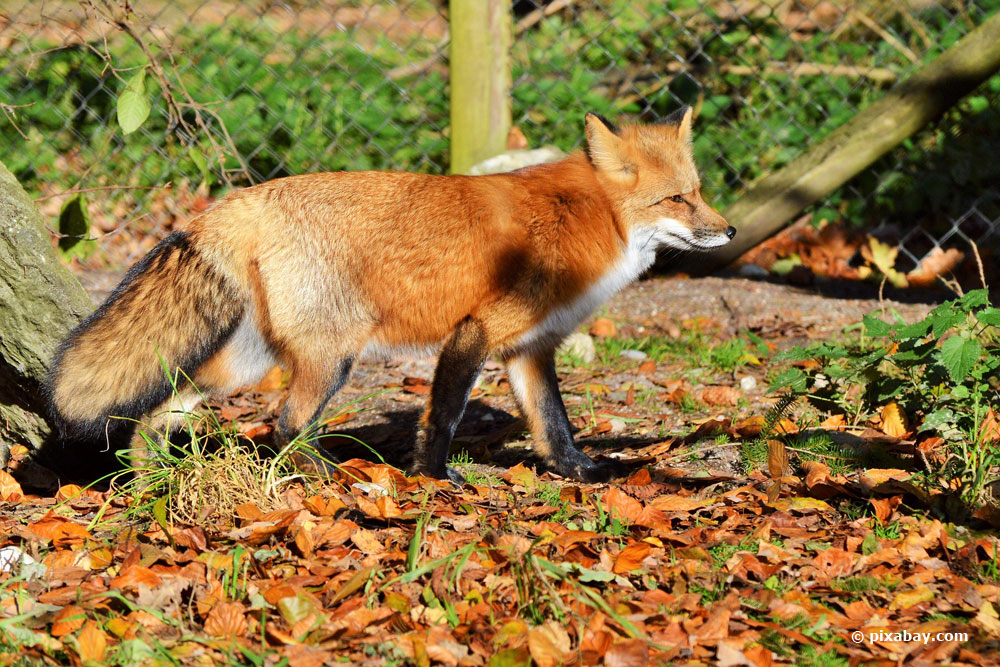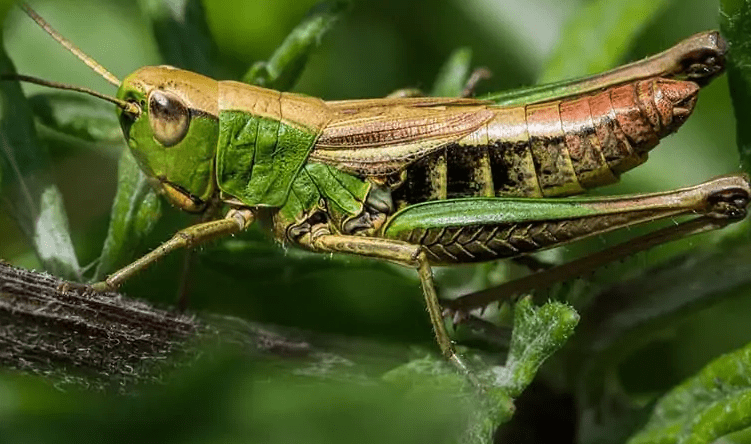Encountering a fox in your garden can be an interesting and occasionally challenging experience. Foxes are generally cautious and shy animals, and they tend to avoid human contact. However, if you find a fox in your garden, it’s essential to react correctly to ensure the safety and well-being of both the fox and your property. Here’s how to react when you encounter a fox in your garden:
- Observe from a Distance:
- The first and most crucial step is to maintain a safe distance from the fox. Do not approach or try to touch it. Foxes can carry diseases like rabies, so it’s essential to avoid direct contact.
- Do Not Feed the Fox:
- Resist the urge to feed the fox. Feeding them can encourage them to return, and it may lead to dependence on human-provided food, which can be harmful to their natural hunting and foraging instincts.
- Secure Trash and Pet Food:
- To prevent foxes from being attracted to your garden or property, ensure that trash cans are securely closed, and pet food is not left outside. Foxes are opportunistic scavengers and will be drawn to readily available food sources.
- Protect Pets:
- If you have small pets like cats or small dogs, it’s essential to keep them indoors or supervise them when they are outside, especially during dawn and dusk when foxes are more active.
- Use Fencing:
- Installing appropriate fencing can deter foxes from entering your garden. Choose a fence that extends at least a foot underground to prevent digging under it.
- Keep a Watchful Eye:
- Continue to monitor the fox’s behavior from a safe distance. If it appears sick or exhibits unusual behavior, contact local animal control or wildlife authorities for assistance. Do not attempt to handle or capture the fox yourself.
- Wildlife Conservation:
- Foxes play a valuable role in controlling rodent populations and maintaining the balance of local ecosystems. Recognize the importance of their presence and try to coexist peacefully. Encourage wildlife conservation efforts in your area.
- Follow Local Regulations:
- Check your local regulations regarding the management of foxes. In some areas, it may be illegal to trap or harm them without proper permits.
- Remove Attractants:
- Keep your garden free of attractants like fruit fallen from trees, bird feeders with spilled seeds, and potential den sites under porches or sheds. Foxes may be drawn to these areas.
- Educate Yourself:
- Learn more about the behavior and ecology of foxes in your region to better understand their habits and how to coexist with them.
Remember that foxes are typically more afraid of humans than humans are of them. In most cases, they will move on from your garden on their own. The key is to ensure the safety of both the fox and your property by observing from a distance, removing potential food sources, and taking appropriate preventive measures. If you have concerns about a fox or if it appears injured or sick, contact local wildlife authorities or animal control for guidance.

rich food supply (compost piles, garbage cans, food scraps, rabbits, fruits, insects, mice, rats, dog and cat food)
safe retreats (wood piles, sheds)
Disturbance-free spaces (parks and cemeteries at night).
In addition, large-scale fox hunting in populated areas is hardly or poorly feasible. The size of foraging areas varies. One to two fox families per 100 acres is considered a low density. For the rearing of young, the fawn likes to hog garden sheds, tree stumps, rock crevices, sheds, garages, sand piles, composts or wood piles.
Foxes in the garden
From the fox’s point of view, your home garden has many enticing offerings. These fall broadly into four categories:
Food and water source
- Safety and shelter
- Play opportunities
- favorable location of the garden
As food and water sources, the fox sees:
- fish ponds and pools
- watered lawn (earthworms)
- the barbecue
- fruit trees, berry bushes and vegetables
- pets (enticing smell)
- cat and dog food
- bird bath, bird bath or bird food
Dense shrubs and trees provide cover and shelter for the red fox. For an ideal shelter foxes consider:
- Sheds (even underneath)
- Space under the terrace
- Garden shed
Foxes like to play with dog and cat toys lying around. Shoes and leather garden gloves also invite them to play. But the trampoline or the garden lounger also attracts the red fox to play. As a favorable location foxes see:
- direct access to the other three points
- direct neighborhood with a park, a forest or allotments
Protection of species
The red fox is a protected species. Therefore, private individuals are not allowed to catch, poison or otherwise kill the fox in the garden. In addition, dogs may not be set on foxes. Chasing is permitted as long as the wild animal is not harmed.
Contents
Chasing foxes away
If a red fox has discovered your garden for itself, you will usually only get to see the tracks of the visitor. However, should you encounter Master Reineke, then you can drive him away with simple means:
- loud calling
- loud clapping
- stomping vigorously
- jumping up and down several times
A short, cold shower with the garden hose also drives foxes away. Under no circumstances should you intervene if the red fox has cubs. Because in this case he may consider you as a threat, from which the young must be defended. Therefore, you should inform the competent authority (forestry office, nature conservation authority, game warden).
Since taming wild animals is prohibited, you should not attract foxes or even offer them food. If the red fox loses its shyness, it will soon not only visit your garden, but walk into the house. If it feels cornered there, the animal will defend itself. In addition, you should generally remember that foxes are wild animals and not pets.
Attention: If the red fox seems trusting, then you should exercise caution, because this is not typical behavior. Therefore, it is best to keep your distance. In areas with rabies danger, it is also possible that the animal is infected with this disease and transmits it through saliva or a bite.
Keep foxes away
Deprive food sources
Since foxes are undemanding omnivores, they will eat anything that is easy to capture. That’s why they make a beeline for the garbage can in the garden. But an uncleaned barbecue also attracts foxes. In summer, fruits such as cherries, plums or mirabelles are on the menu. Therefore, you can keep foxes away by depriving them of their food sources:
- Weighing down and/or securing garbage cans
- cleaning the barbecue after grilling
- removing fallen fruit from the ground
- Do not put dog and cat food outside
- Cover compost heaps
- Place bird feeders in a fox-proof location (at least 1.5 meters above the ground)
- Deprive other attractions
To permanently deter foxes, make your yard as unattractive to foxes as possible. This includes:
- not leaving toys lying around
- Stow garden utensils well
- Put away garden loungers
- Secure trampoline
Because as long as foxes find attractions, they will visit you again and again. Therefore, these measures include some detective work to find out what so magically attracts the fox.
Outdoor lamps
Outdoor lamps that respond to movement at night will drive foxes away, as they are startled by the sudden light. However, motion detectors are not a permanent solution, as foxes soon get used to them.
Human voices
Foxes are shy animals. If humans are nearby, they usually scurry away. Therefore, you can fake the presence of people by using human voices. A set-up radio tuned to a station with little music and lots of speaking voices will help. Here too, however, you should expect that Master Reineke will only be fooled for a short time.
Tip: To avoid a conflict with the neighbors, you should announce this measure in advance.
Frequently asked questions
How do I protect rabbits and hares from the fox?
Since foxes are very good at climbing and digging, you should secure the enclosure accordingly. Also make sure that there are no holes in the fence. Foxes can squeeze through a hole eight inches in diameter.
The fox in my garden is eating my berry fruit, what to do?
The best thing to do is to harvest the fruit. But it is also recommended to cover the bushes with a special net. This way they can keep foxes away from berry bushes.
I miss dog toys. Was that a fox?
Since foxes find dog and cat toys interesting, they may take them. Or maybe it was the neighbor’s cat.







